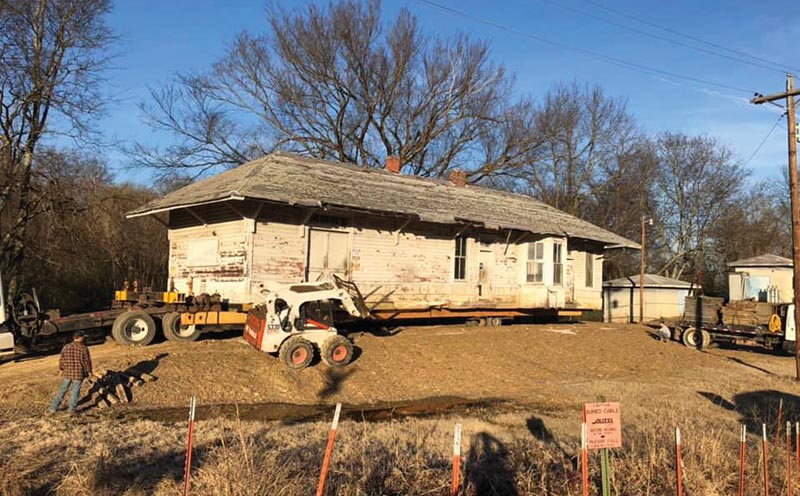 The America of the small-town railroad depot is largely gone, and has been for nearly 70 years. With the passenger rail system in steady decline following the end of World War II, railroads sought property tax relief by closing and tearing down train stations as early as the 1950s. Not all were demolished, with some reopening as stores, restaurants, offices, and sometimes museums.
The America of the small-town railroad depot is largely gone, and has been for nearly 70 years. With the passenger rail system in steady decline following the end of World War II, railroads sought property tax relief by closing and tearing down train stations as early as the 1950s. Not all were demolished, with some reopening as stores, restaurants, offices, and sometimes museums.
Some communities fought to preserve or restore passenger service, with mixed success. More often, though, it was the symbolic value of these buildings that became the center of struggle. By the 1970s, most people got around by car or plane, not train, and what was mourned after the loss of passenger service was not the service itself so much as the meaning that the depot once held.
Like the corner bank, the post office, or the library, the depot was once one of the key axes around which small-town life revolved. It did not matter whether anyone used it anymore. That low-slung form, probably built of wood framing; the old chalky paint, probably in some shade of cream or tan or brown; the deep, shady, welcoming eaves that held off the rain and the sun; the big signs at each end, usually black on white, proclaiming proudly exactly what town this was — there was a kind of validation to all that. For a town to have a depot was for that town to mean something, to matter.
While many small-town preservationists were able to save these heavily symbolic structures, more often than not this salvation required a very specific change — removal from its original location by the tracks. This raises a question — when a depot is removed from the context of the railroad, what precisely has been saved? Remember that, to a railway, the word “station” does not mean a building or structure, but a fixed and measured point along the tracks. In moving a depot, the station remains where it was, and only the structure itself is relocated.
I once talked to historian Janet Potter about this, and she pointed out how the depot’s design responds to the linearity of the railway tracks themselves, its every arrangement built around its function for handling passengers, mail, and express. The shape of the depot “is very specific, each inch of it with a purpose.” Once a depot is no longer trackside, once it is severed from its relationship with place, is it really still a depot at all?
While it is fascinating, I’m not entirely convinced by this argument. A depot by the tracks that is boarded up and not used is still a depot, it’s just a disused one. Moving it away from its original location does, I think, do some damage, but so does tearing it down. What puzzles me more, however, is what these depots are being used for after they have entered their second, non-railway lives. What is being said when a depot is rescued for its symbolism, but then given no track beside it, nor even any reference (besides perhaps a plaque) to help explain what this building was actually used for? What is the message when the city council adds a 30-foot clocktower, a fake wrought iron fence, or applies garish colors with no connection to local history?
Move if you must, but find a way to preserve the context. Otherwise, the effort put into saving the structure will be lost on future generations.
—Consulting Editor ALEXANDER BENJAMIN CRAGHEAD is a transportation historian, photographer, artist, and author.



